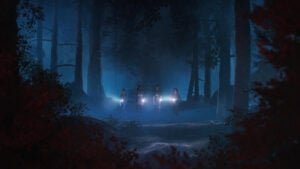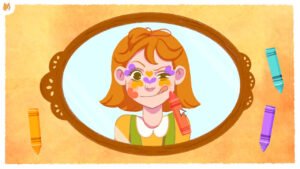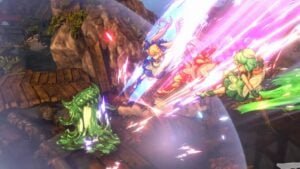With The Lion King and Mulan under this man’s belt starting out his career, it only made sense he was the man for the job as the animation director on the hit Netflix film Nimona. Ted Ty is the global head of character animation at DNEG Animation. He played a key role in bringing this diverse, inclusive and emotional animated movie to a major streaming platform. At SCAD AnimationFest 2023, Ty was also presented with the Outstanding Achievement in Animation Award. CGMagazine interviewed Ty about the emotional aspects of Nimona‘s animation and the adaptation process of the bestselling graphic novel.
Below is the full interview with Ted Ty on Nimona and more:
What was the thought process behind adapting the art style from the Nimona graphic novel, along with what was already done at Blue Sky Studios?
Ted Ty: Yeah, since Aiden Sugano, the production designer, and Nick [Bruno] and Troy [Quane], the directors, had already been intimately involved with the film far longer than I had prior to its arrival at DNEG Animation, they had made a lot of decisions on its adaptation. Both in terms of cinematically and lighting, staging, and [compositing]. But for animation, we went with making sure that we tried to keep it as graphic as possible. In order to reflect Nate’s [ND Stevenson] drawing style in the graphic novel, in the sense that they were very simplified in the graphic novel, they still delivered an incredible amount of emotion.
From just very still drawings, I don’t think Nate gave himself enough credit for how well he can communicate through a very singular drawing. It’s very impressive. And so, that was always in the back of our mind when we were creating things. Thus, the really strong use of profiles with our characters facing one another versus the traditional three-quarter carryover from theatre. Or you open up three-quarters so the audience can hear you better.
That carried over into feature animation in 2D, which allowed the characters to be seen better in three quarters—and to be more appealing to draw. We were able to kind of put that aside because the character designs had been conceived. They could go into full profile and still be very appealing and read very clearly. And we were still able to execute technically with them on an emotional level. So that was another way to carry over that very graphic style into a lot of the profile and a lot of the staging of the characters.
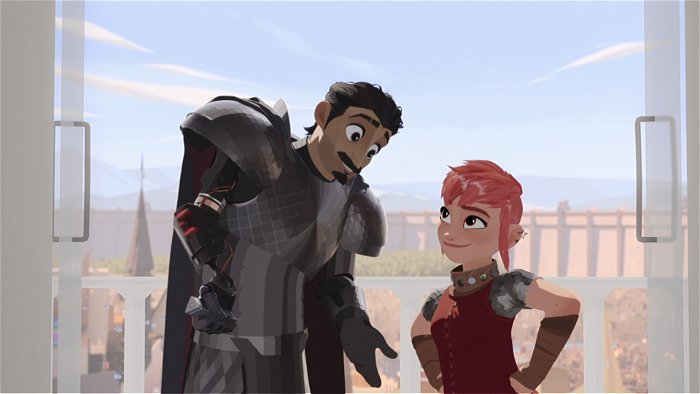
Even that final big battle scene at the end had a major change. I remember reading the graphic novel, and Nimona becomes a dragon versus the black-and-white giant she becomes in the film. That was an interesting change for me.
Ted Ty: Yeah, I think a lot of those really were choices from Nick and Troy once they found their vision on how the animated film would play out versus the graphic novel. They were obliged by themselves in their hearts to see that vision through, with Nate’s blessing, of course. And I think it turned out great.
Oh yeah, for sure! And I’m guessing you can’t speak too much about the storytelling changes?
Ted Ty: I’ll tell you what, I do know that when it arrived, the story reels didn’t really differ very much from when I first saw them versus the final end result. With the exception of the first act, the first act was tweaked a little bit—the introduction of Ballister [Boldheart]. The opening of a theatrical release is going to feel a little different than the opening of a streaming release.
Because audiences are more captive in a theatrical release and people are impatient in front of a television. And I think the pacing of any film that is on Netflix has to take into account the attention span of people. I think they didn’t cut any corners. I think it’s a beautiful introduction. But I like the pace of it. I think it feels pace-y without feeling like, without feeling too quick.
I felt like you sat with the characters long enough to connect, and I think you talked about important moments of Ballister and Nimona connecting. Especially when she goes into backstories, and you really sit with those moments. I really enjoyed that.
Ted Ty: I mentioned yesterday that Nimona, we’re not sure what we think about her at the start of the film. Nick and Troy purposely wanted to not let the audience know what side she was on. Is she a villain? Is she a protagonist/antagonist? So we get to know her, and Bal can get to know her. And really earn the trust in their relationship by him gradually opening his perspective. And that is why I think the payoff was more genuine. We just let it happen naturally.
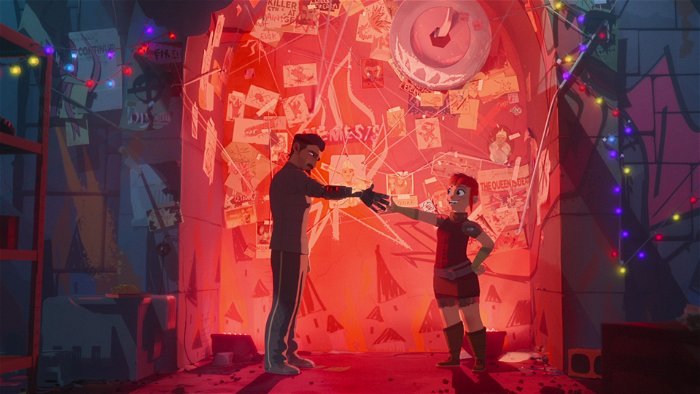
And going back to what you were saying about Netflix as a platform. Was that the initial plan, or was there a theatrical release possibility?
Ted Ty: That was just part of the pledge as part of the plan. Yeah, because Netflix was very brave—and Annapurna [Pictures]. Megan Ellison literally pulled us out of the fire with the help of some of the producers who were ex-Blue Sky. Those who carried the project with them and who had to look for a new home. Julie Zachary and Karen Ryan, those were two producers. And they hustled. Megan Ellison just came like a knight in shining armour and said, ‘Hey, this has got to happen.’ And with her courage and Netflix’s courage, this movie it’s miraculous that it got made.
It’s eight years in the making. Most people don’t realize that, eight years! And everyone says, ‘Oh Ted, this is kind of timely for this day and age and the message. But if it had come out two years after it was conceived, the period of time most feature films get made after in the gestation period. It’s ahead of its time if you think about it. Because it would have come out six years ago, but we feel super lucky to do the film and kind of carry the torch for Blue Sky. And then take it to the finish line and do the movie.
For sure, I’m really glad it got made. And I really would not have discovered this film or the graphic novel if it wasn’t for my brother and friend, who is part of the queer community. They told me I had to watch this film. And this brings up the point of how you all decided to push for diversity and inclusion in Nimona?
Ted Ty: Sure. I think you have to embrace things like that. Yeah. We’re very proud that it’s clearly inclusive. And it carries across the message of inclusion for the LGBTQ+ community. However, if you think about it, a film like this can be exceedingly controversial. But the fact that Ballister and [Ambrosius] Goldenloin aren’t struggling to find their identity in the film and in their community, they’re not struggling to find their identity. They become really part of the storytelling. And it’s very relevant because it’s who they are. But outside the fact that they love one another and they’re supporting one another. We feel that it’s a story about acceptance.
Ultimately, [it’s about] judging people for who they are, not what they are. And so I think that’s why people like yourself, who are not part of that community as a cis guy, enjoyed [the film] equally—not just for the animation or the lighting. But you forget. And it hopefully pulls you in and engages you. It is a really emotional story that any one of us could potentially go through. I don’t think we’re all getting knighted and being framed for the murder of the queen. But in the sense that we’ve all gone down the journey of feeling self-doubt, feeling a lack of acceptance, and wondering in what way, shape or form that comes.
And really, it’s about being brave enough to be yourself. Then realizing that acceptance lies in eventual trust between people one at a time—and an openness and an honesty. So we tried to permeate the film with those values, and people just finding their way. And hopefully, it worked out. I think Nick and Troy did a great job.

And wrapping things up, what would be your take on the rhetoric that festivals or the Academy would not take animation seriously about 20-30 years ago? Where do you think the shift of animation being mainstream began?
Ted Ty: The Lion King. Because it was the first time an animated film was nominated for Best Picture and live-action. And it really brought attention to the fact that storytelling ultimately is what feature animation at the highest level is about. And if people are taken by the story, whether it be live action or animation, great performances, great writing, great direction, and great acting for it provides the same experience in terms of entertainment and relatability.
So, I think in Asia, it’s accepted in a much wider perspective than it still is in North America. I think largely here, it’s seen as a kid’s medium. But I think things are slowly changing. And Nimona hopefully does that because it’s squarely not just for kids. And kids can see it equally, so. But I think in that way, hopefully, more films go in that direction, and we’ll have to slowly ease our way into being more diverse stylistically in North America. We’re getting there.
Awesome. It was really great speaking with you. It was definitely a pleasure, and I cannot wait to see what you work on next.


